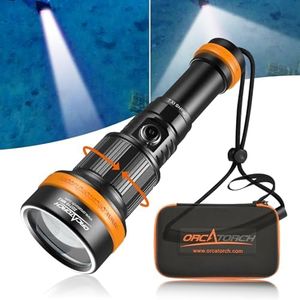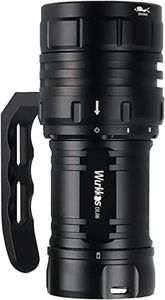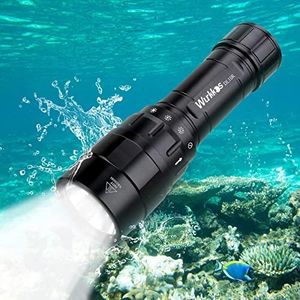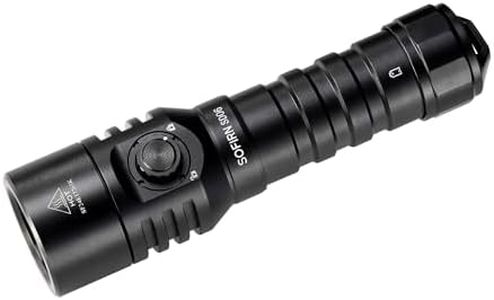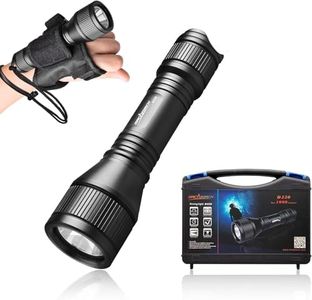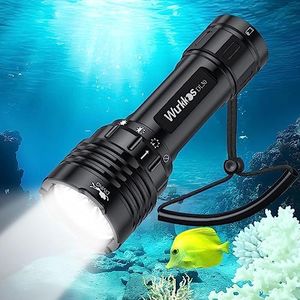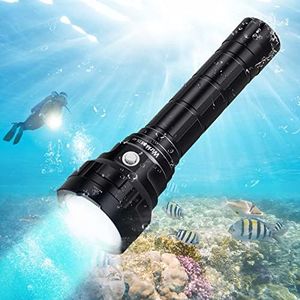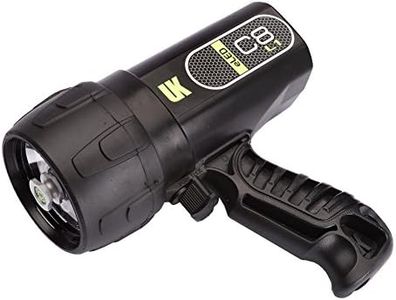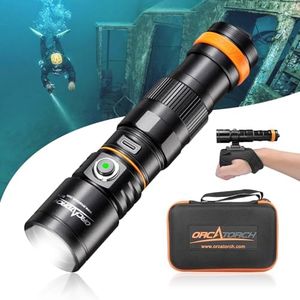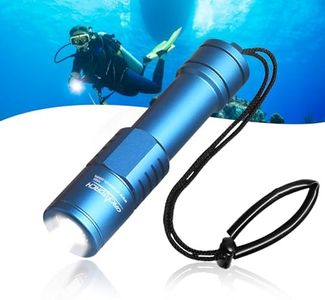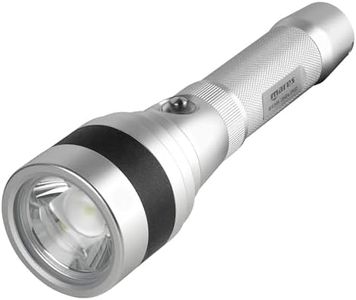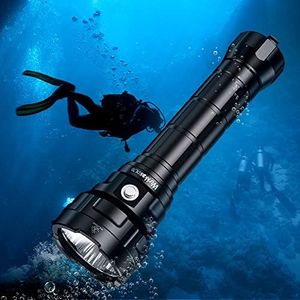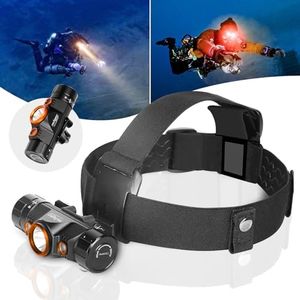We Use CookiesWe use cookies to enhance the security, performance,
functionality and for analytical and promotional activities. By continuing to browse this site you
are agreeing to our privacy policy
10 Best Scuba Diving Flashlights
From leading brands and best sellers available on the web.Buying Guide for the Best Scuba Diving Flashlights
Choosing the right scuba diving flashlight means focusing on performance, reliability, and suitability for your diving environment. Think about where and how often you dive, as well as the kinds of visibility challenges you might face. Scuba diving flashlights are essential for safety and navigation, especially in low-light or night-time dives and wreck or cave exploration. Picking a flashlight tailored to your needs can make your underwater experience much safer and more enjoyable.Brightness (Lumens)Brightness, measured in lumens, tells you how much light the flashlight can produce. This is important because underwater environments can be very dark, especially at greater depths or in murky waters. Low-output lights (under 500 lumens) are suitable for close-range tasks or clear water, while medium-output lights (500-1000 lumens) offer a balance for most recreational dives. High-output flashlights (over 1000 lumens) are best for night dives, cave diving, or situations where powerful illumination is needed. Choose a brightness level based on the type of dives you do most often and how much visibility you want to maintain.
Beam AngleBeam angle determines how wide or narrow the light from your flashlight will be. Narrow beams (around 8-12 degrees) are more focused and penetrate farther, making them ideal for spotting objects at a distance, searching, or signaling. Wide beams (over 20 degrees) illuminate a broader area, which helps with photography or general navigation. If you mostly dive in open water or need to look far ahead, a narrow beam is preferable. If you want to light up your immediate surroundings or work close to the reef, a wide beam is the better choice.
Depth RatingThe depth rating shows how deep the flashlight can be safely used without leaking or malfunctioning. Shallow-rated lights are designed for snorkeling or shallow dives (up to 40 meters), while advanced flashlights with higher ratings (over 100 meters) are for technical or deep diving. Always match the depth rating of your flashlight to the maximum depth you plan to dive, adding a safety margin if you expect to go deeper occasionally.
Battery Type and RuntimeFlashlights use either disposable or rechargeable batteries, and the runtime tells you how long the flashlight can operate before needing fresh power. Rechargeable batteries are more eco-friendly and cost-effective if you dive frequently, while disposables can be handy for travel or backup. Longer runtime is essential for extended or night dives so you don’t get caught without light underwater. Make your choice based on the duration of your typical dives and whether you want the convenience of quick recharging or the reliability of swapping in fresh batteries.
Size and HandlingFlashlights come in various sizes, from compact hand-held models to larger, more powerful ones. Smaller lights are easier to carry and fit in your BCD pocket, making them ideal as backups or for travel. Larger lights often offer more power and runtime but can be heavier or more cumbersome. Choose a size that feels comfortable in your hand and fits well with your gear setup, balancing portability with your need for light output.
Durability and Build QualityDurability is critical because your flashlight will be exposed to saltwater, pressure, and occasional impacts. Look for flashlights made from corrosion-resistant materials (like anodized aluminum or reinforced plastics) and with quality seals, such as O-rings. Good build quality not only ensures long life but also provides reliability—an essential factor for any dive safety equipment. Think about how rough you are on gear and pick a flashlight that can handle your diving conditions.
Controls (Switch Type)The control or switch mechanism needs to be easy to operate with gloves and reliable underwater. Some switches are push-button types, some are rotary, and others are magnetic sliders. Magnetic switches are popular because they don’t have openings that water can seep through. Choose a control style that matches your preference and diving style, considering how easy it is to use while wearing gloves and how resistant it is to accidental activation.
